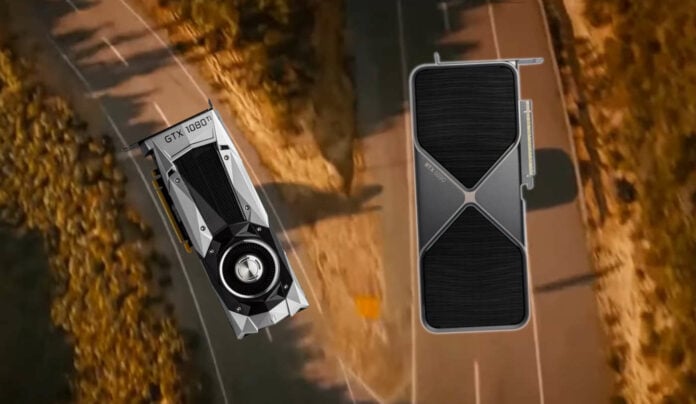Nvidia has officially set dates to end support for its ageing non-RTX GPU series, including Maxwell-, Pascal-, and Volta-based graphics cards. The company will start by axing associated Game Ready drivers, before ending all support in three years. This will mark the end of the pure raster era for computer graphics.
Starting October 2025, GeForce 700, 900, and 1000 Series cards will no longer receive Game Ready drivers, which include game optimisations and graphics profiles. This coincides with Windows 10’s end-of-life, which is also scheduled for October 2025, the 14th to be exact. While the latter can get another year of support for those willing to pay or enable OneDrive, the aforementioned GeForce GPUs won’t have that luxury. This means that the RTX 20 Series will become the oldest lineup that receives game optimisations going forward.
Past this date, the GPUs will transition to receiving only quarterly security updates for the next three years, until October 2028. This should ensure safe operation for those still rocking these cards until an upgrade opportunity arises. Among the well-known models that will miss these drivers are the dirt-cheap GTX 750 powering ultra-budget PCs, the Titan V (Volta) with its ahead-of-time HBM memory, and undoubtedly the still-capable GTX 1080 Ti. Despite lacking the latest upscaling and ray tracing features, many of these cards remain decent, especially on less demanding games or at lower resolutions.
But that’s not all. Nvidia is also planning to end support for all GeForce RTX GPUs on Windows 10 starting October 2026, forcing any remaining users to switch to Windows 11. To be exact, this is an extension to the previously announced date, providing users who plan on getting the Windows 10 security extension with more time. Though we understand that the company can’t continue supporting hardware indefinitely, it’s unfortunate to see Windows 10 left behind even with the latest GPUs. So, keep this in mind if you plan on bundling the upcoming RTX 60 Series or RTX 50 Super with your Windows 10 install.
The GeForce 10 Series will be remembered as the generation that set a new bar for performance, bringing 11GB VRAM to the consumer market. With nearly double the performance and VRAM of its predecessor, the GTX 1080 Ti sits among the best GPUs ever released. After eight years of loyal service, it’s time to let it rest. Or not, since these cards will remain perfectly functional, though missing optimisations for the latest games.
So, if you are still rocking one, don’t rush to sell it. Well, at least until all games begin requiring exclusive ray-tracing support.

